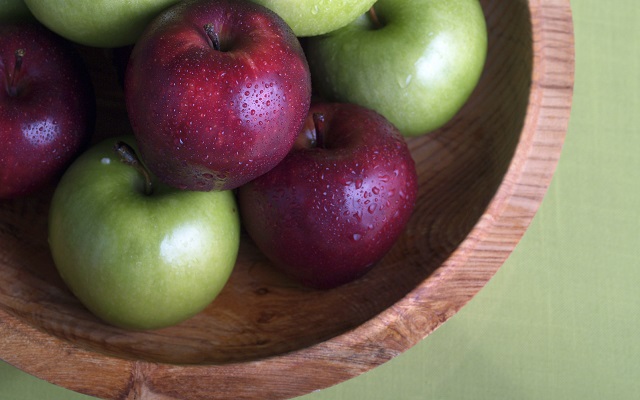The mention of fiber calls to mind images of dry, flavorless muffins or breakfast cereals that look and taste like tree bark. Clearly, these images of outdated “health foods” aren’t particularly appealing and have overshadowed the beneficial impact that fiber has on our wellbeing.
Fiber doesn’t sound like the most exciting topic in nutrition. But learning more about how much this underappreciated nutrient can affect your health might change your opinion.
What you may not know is that getting the right amount and the right types of fiber in your diet can have benefits far beyond digestive health. In fact, the amount of dietary fiber you receive could make an impact on your immune system, your heart, how well you control your appetite, and even how well you manage your weight.
1. Nearly everyone needs more fiber.
Only about 5 percent of adults meet the recommended amount of dietary fiber in a typical day (1). The Institute of Medicine recommends at least 25 grams for women and 38 grams for men, but the average adult consumes just 16 grams daily (1, 2). This means that 95 percent of people are missing out on the potential health benefits of getting the minimum recommended amount of fiber.
Even if you regularly eat healthful foods like fresh fruits and vegetables, you might still be missing the goal. These foods often have a lot less fiber per serving than you might expect. For example, a medium apple contains about 3 grams of fiber, which means a woman would need the equivalent of about nine apples to reach the recommended amount of fiber in a day.
2. “Fiber” is not just one thing.
The Institute of Medicine defines dietary fiber as non-digestible carbohydrates (2). It’s a seemingly simple definition, but belies a surprising amount of complexity. The term “dietary fiber” doesn’t represent a single dietary component, but instead refers to a complex mix of different plant-based compounds, each with unique health-supporting benefits. Many different components of plants, like inulin from onions, pectin in apples, and beta-glucan found in oats are all different types of fiber, each with unique benefits.
3. To get many benefits, choose from a variety of sources.
The unique properties of the different types of dietary fiber are what provide beneficial effects (3). For example, some types of fiber dissolve in water while others don’t. It’s what distinguishes soluble from insoluble fiber. Other types of fiber, known as gel-forming fibers, thicken when mixed with water. Oatmeal is a familiar example of a food rich in this type of fiber.
These different properties contribute to fiber’s healthful effects a variety of ways. Insoluble fibers are known to promote digestive regularity by adding bulk to stool, making it easier to pass. Gel-forming fibers can help you to feel satisfied longer following a meal by slowing the rate of digestion, which makes this type of fiber useful in weight management (3). These are only a few examples of how different fibers support health, and choosing from a variety of foods can help you to receive the most benefit.
4. Some types of fiber have unique prebiotic properties.
Prebiotics are a type of fiber that support the growth of beneficial bacteria in the large intestine (examples: inulin, isomaltooligosaccharides, digestion-resistant maltodextrin). Many people consume beneficial bacteria, called probiotics, either as a supplement or in foods like yogurt. One way to think of prebiotic fiber is as a source of food for probiotic bacteria. Scientists are continuing to find new and surprising ways that our intestinal bacteria can influence our wellbeing. A healthy, balanced community of intestinal bacteria has been linked to benefits for digestive health and immune health, to name a few (4). Because prebiotic fiber is essential to the maintenance and growth of beneficial bacterial within the large intestine, getting plenty of this type of fiber is important for promoting a healthy and balanced community of intestinal bacteria.
As nutrition scientists learn more about dietary fiber’s effects, it’s increasingly clear that we should all be consuming at least the recommended daily amount of fiber. Unfortunately, most people fall short when it comes to getting an adequate amount. What is commonly referred to as “fiber” in foods actually consists of a variety of plant-based compounds, each with different properties and unique benefits. Now that you know the impact fiber can have on your wellbeing, you might be more interested in making sure you are giving your body the right amount of fiber every day.
References
- King DE, Mainous AG 3rd, Lambourne CA. Trends in dietary fiber intake in the United States, 1999-2008. J Acad Nutr Diet. 2012 May;112(5):642-8.
- Institute of Medicine, Food Nutrition Board. Dietary Reference Intakes for Energy, Carbohydrates, Fiber, Fat, Fatty Acids, Cholesterol, Protein, and Amino Acids. Washington, DC: The National Academies Press;2005.
- McRorie JW Jr. Evidence-Based Approach to Fiber Supplements and Clinically Meaningful Health Benefits, Part 1: What to Look for and How to Recommend an Effective Fiber Therapy. Nutr Today. 2015 Mar;50(2):82-89.
- Conlon MA, Bird AR. The impact of diet and lifestyle on gut microbiota and human health. Nutrients. 2014 Dec 24;7(1):17-44.





